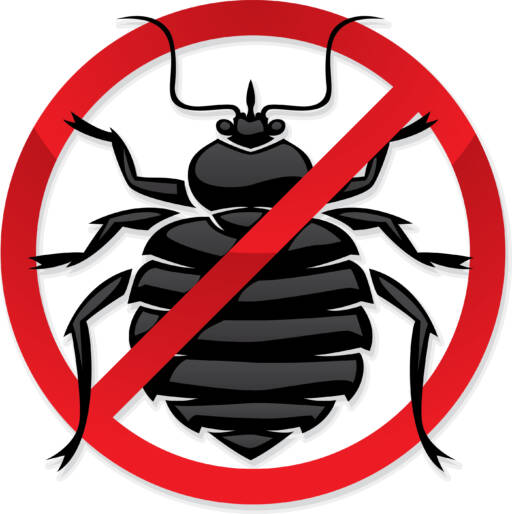
Pesticide Resistance
Are you thinking about using pesticides to get rid of bed bugs?
The insects are developing a resistance to widely used chemicals, according to a new study.
Studies of bed bug populations indicate that resistance to pyrethroid insecticides, which are used in the majority of bed bugs cases, is widespread. Researchers say even if only a tiny percentage of bed bugs are resistant, they will survive and reproduce, eventually creating entire populations that can’t easily be killed off. Bed bug pesticide-resistance appears to be increasing dramatically.
How toxic are pyrethroids?
Structural differences between pyrethroid compounds result in large variations in toxicity (as expressed in acute toxicity experi- mentation in small rodents) There are also other determinants of toxicity in mammals. For instance, formulated commercial prod- ucts may differ in toxicity from technical grade products, and the toxicological profile of the formulated product is not necessarily identical to that of the pure active ingredient. The ratio of cis and trans configurations in commercial products is also an important determinant of pyrethroid toxicity in mammals, with cis isomers generally being more potent. Finally, commercial pest control products are up to 99% composed of “inert” ingredients, such as synergists (piperonyl butoxide, sulfoxide, sesamex) and solvents. These are relatively non-toxic chemicals, but co-administered in sufficient amounts with active ingredients, they can decrease the threshold doses for pyrethroid toxicity in humans.
We have little knowledge of long-term effects
Effects of acute exposure to high levels of pyrethroids are well- known and documented. In general, chemicals are tested at high- effective doses and safe levels are established based on downward extrapolation of the lowest observed adverse effect level (LOAEL) or the no observed adverse effect level (NOAEL) obtained from exam- ining a few endpoints in a limited number of animals. However, this approach may not be appropriate, as post-marketing surveillance has shown adverse effects at levels of exposure considered non-toxic at the time of chemical registration. Further, current assumptions of the safety of long-term exposures in humans are not based on empirical assessments using realistic scenarios of repeated low-dose uptake of multiple pyrethroid compounds. Con- cerns for effects of long-term exposure include endocrine disruption, functional alterations in reproductive organs and effects on neurologic development.
In its Endocrine Disruptor Screening Program (EDSP), the U.S. Environmental Protection Agency will be testing a number of pesticide active ingredients and high production volume chemicals for their effects on the endocrine system. Permethrin is on the list of chemicals that will be screened first because of its occurrence in three of four exposure pathways as defined by the EPA: drinking water, food, residential use and occupational exposure. Endocrine disruption is of great importance because chemicals targeting endocrinological domains can have effects at low doses that are not predicted by effects at higher doses.
Both animal studies and studies in non-occupationally exposed humans indicate that pyrethroid exposure can affect sperm concentration, motility and morphology. For example, significant positive associations were found between pyrethroid metabolites in urine and FSH (follicle-stimulating hormone) and LH (luteinizing hormone) levels in serum in non-occupationally exposed men. Elevated levels of FSH are highly predictive of poor semen quality. Associations were also found between sperm quality parameters (concentration, motility, sperm DNA damage and DNA fragmentation) and pyrethroid metabolites in urine. Although most study subjects were recruited from infertility clinics, men with the highest levels of pyrethroid metabolites in their urine had lower semen quality, higher levels of sperm DNA damage and higher levels of DNA fragmentation.2
Since pyrethroids primarily act on the nervous system of insects and mammals, there is also concern for neurological and neuro- psychological effects of pyrethroid exposure, such as effects on behaviour, learning and motor performance. So far, this has only been studied in small rodents. Preliminary evidence indicates that there are age-related differences in neurotoxicity, with neonatal rats being up to one order of magnitude more sensitive to the acute effects of deltamethrin, cypermethrin and permethrin than adult animals when middle-to-high effective doses are administered by the oral route: this may have important implications for the safety of pyrethroids in babies and small children.
Combined exposure to pyrethroids and other chemicals is rele-vant to realistic exposure scenarios. The effects of repeated exposure to multiple pyrethroids at environmentally relevant levels may differ qualitatively and quantitatively from the acute or subacute effects of clinically effective doses of single compounds. For example, oral administration of a combination of pyrethroids to rats resulted in locomotor effects at levels that were well below the threshold levels for the individual test compounds. Also, there is limited evidence that combined administration of pyrethroids with insect repellents such as DEET and some organophosphates might have additive or synergistic effects on the nervous system.
Why should we be concerned?
There are several reasons to be concerned about pyrethroids. First, household use of pyrethroid appears to be common: 89% of US homes had detectable levels of permethrin. Although 15% of Canadian households are reported to use pesticide products indoors, no Canadian data are available on the presence of pyrethroid residues in homes. Pyrethroids are the active ingredi- ents of many insecticidal products, including sprays, pet shampoos against ticks and lice, foams, mosquito coils, and powders that appear to be ubiquitous in households. For example, permethrin is used to control bed bugs; its widespread use has likely contributed to the recently documented greater resistance of bed bugs and subsequent increase in infestation rates. Pyrethroids may be applied excessively, which may result in health effects: in a recent US study, pyrethroids, pyrethrins, or both were implicated in 89% of illnesses from insecticides used to control bed bugs.
Second, pyrethroids do not remain in the air but deposit onto surfaces and may accumulate in house dust due to their low vapour pressure.1They may not degrade as rapidly in indoor environments as previously thought. It has been stated that household exposure contributes little to the overall uptake of pyrethroids, and that diet is the most significant source of the body burden. Recent research shows that household use may actually contribute more to overall pyrethroid exposure than diet, especially for small children (who crawl on the floor and practice hand-to-mouth behaviour). Multi-day measurements strongly suggest that the variation in levels of pyrethroid metabolites can be attributed to pest control product applications at home and that peaks following household use of insecticide products may be more relevant for long-term health risks than food consumption, especially when exaggerated or improper application is practiced.
Pyrethroids are assumed to metabolize rapidly in mammals, but a recent study shows that pyrethroids bioaccumulate in dolphins and are transferred from mother to calf through breast milk. body burden of pyrethroids has also been found in humans:
metabolite levels found in urine samples in the Canadian population are similar to those observed in the US population. Although measurable levels of pyrethroid metabolites do not necessarily mean that adverse health effects will occur,the fact that they are detected in the general population indicates that the alleged high metabolic capacity for pyrethroids in mammals, including humans, may not be optimal and that exposure is likely to be ongoing.
Implications for public health
No reliable data on use and exposure are available for Canada, but public health professionals should be aware that pyrethroids are almost certainly ubiquitous in Canadian households. Education is needed because occupants may not realize that many of the prod- ucts they use contain pyrethroids.
Public health practitioners may also help lobby for better labelling of pyrethroid products. For example, information on the ratio of cis and trans isomers, which greatly affects toxicity, is often not included on Material Safety Data Sheets. Also, it is known that people often do not understand the technical information and application instructions included on pesticide labels, which may result in improper use and sometimes higher application rates than those recommended on the label.
Pyrethroids may be perceived as safe because they are wrongly thought to be “natural”. People may equate natural pyrethrins with synthetic pyrethroids, and deem both natural and safe. Modern synthetic pyrethroids certainly are not natural but rather man- made chemicals that were designed to optimize the insecticidal attributes of natural pyrethrins. Further, natural does not necessarily mean harmless.
A handful of reports unequivocally indicate that exposure to pyrethroids may lead to alterations in the neurological, endocrine and reproductive domains at doses near and below previously proposed toxic thresholds in laboratory animals. At present, it is unclear to what extent these findings can be extrapolated to humans. Few human studies are available, but preliminary results seem to point in the same direction. Currently, empirical evidence is lacking to produce well-informed decisions on health protection from long-term exposure to pyrethroid insecticides.
This article is from The Canadian Public Health Association.
If you would like to read the entire article please click here.
Call: 250-730-1854








